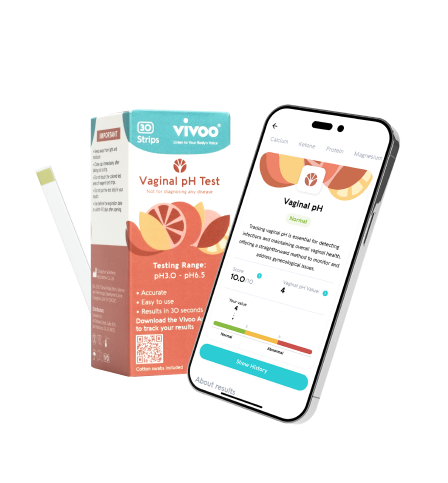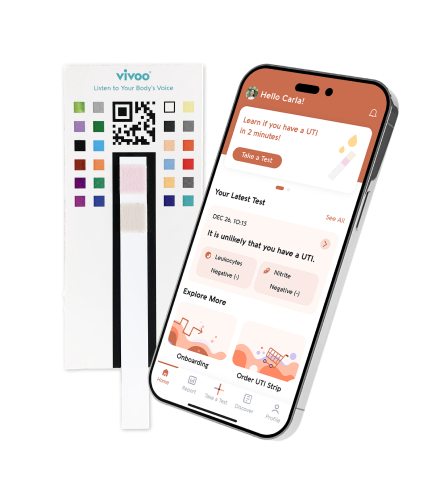Welcome to our latest blog post, where we dive into a topic that resonates with many—Premenstrual Syndrome (PMS). If you've ever found yourself struggling with mood swings, cramps, or unexpected tears right before your period, you're certainly not alone. PMS affects a vast majority of women at some point in their lives, bringing a mix of emotional, physical, and behavioral symptoms.
Whether you're looking for ways to alleviate these discomforts or simply seeking to understand more about what's happening to your body, we're here to explore the ins and outs of PMS together, in a friendly, supportive way. So grab a comfy seat, and let's get started on this journey of understanding and managing PMS!
What Is Premenstrual Syndrome (PMS)?
Premenstrual Syndrome (PMS), also known as Premenstrual Tension (PMT), is a collection of physical, emotional, and behavioral symptoms that many women experience in the days leading up to their menstrual cycle. These symptoms can range from mild to severe and can significantly impact a woman's daily life.
PMS is a common condition, with up to 90% of women of childbearing age experiencing at least some premenstrual symptoms. A smaller proportion of these women, less than 10%, experience a more severe form of the disorder known as premenstrual dysphoric disorder, which can be as debilitating as major depressive disorder and result in almost 3,000 days of severe symptoms over the reproductive years.

What Causes PMS?
Numerous factors have been identified as potential contributors to the development of PMS, including both physiological and psychosocial elements. The exact causes of PMS remain uncertain, but several factors may contribute.
PMS is not caused by a hormone imbalance or a deficiency of any specific hormone, as once believed. However, ovulation (the release of an egg from the ovary) appears to play a role in triggering symptoms. After ovulation, progesterone is released into the bloodstream, and it is thought that women with PMS are more sensitive to normal levels of this hormone.
Fluctuations in serotonin also seem to influence PMS. Serotonin, which regulates mood and promotes feelings of happiness, varies throughout the menstrual cycle. Women with lower serotonin levels may be more prone to PMS symptoms, including insomnia, fatigue, and food cravings.
Research suggests that obesity and limited physical activity increase the likelihood of experiencing PMS. A higher BMI is strongly linked to an increased risk of developing PMS. Each 1 kg/m² increase in BMI raises the risk by 3%. Women with a BMI ≥27.5 kg/m² had a significantly higher PMS risk compared to those with a BMI <20 kg/m², even after adjusting for factors like age, smoking, and physical activity. Significant weight gain since age 18 also increased PMS risk, though weight cycling did not. Higher BMI was particularly associated with symptoms like swelling, backache, and abdominal cramping. Although stress is not a direct cause, it can worsen symptoms.

What are the Symptoms Of PMS?
PMS typically presents with symptoms such as;
- irritability,
- mood swings,
- depression,
- anxiety,
- breast tenderness,
- bloating,
- fatigue
These symptoms usually begin during the luteal phase of the menstrual cycle and subside shortly after menstruation starts. While most women experience some degree of premenstrual symptoms, the severity and impact on daily life can vary widely.
Although more than 100 symptoms are linked to PMS, most women report only a few. PMS symptoms are broadly categorized into psychological, physical, and behavioral types. Psychological symptoms include irritability, mood swings, low confidence, anger, sadness, anxiety, fatigue, tearfulness, poor concentration, restlessness, and depression.
Physical symptoms range from weight gain, abdominal bloating, tender or lumpy breasts, swollen ankles, headaches, and backaches to skin changes, acne, upset stomach, insomnia, joint pain, dizziness, and tiredness. Behavioral symptoms may involve food cravings, overeating, and a reduced interest in sex.
How To Manage PMS Symptoms?
PMS symptoms can be managed through lifestyle changes, medications, and self-care strategies. Regular exercise helps improve mood and reduce bloating. A balanced diet rich in fruits, vegetables, and whole grains, and low in salt, sugar, caffeine, and alcohol can ease symptoms. Stress management techniques such as yoga, meditation, or deep breathing exercises are also beneficial.
Does PMS Change With Age?
Yes, PMS symptoms can change with age. Symptoms may worsen in your late 30s and 40s as you approach perimenopause, a stage when hormone levels fluctuate more intensely. Women in their teens and 20s may experience different symptoms, often linked with irregular cycles. After menopause, PMS disappears since ovulation stops, and hormone levels stabilize.

Premenstrual Dysphoric Disorder (PMDD)
Premenstrual Dysphoric disorder (PMDD) is a more severe form of PMS that interferes significantly with daily life. It includes extreme mood changes such as severe depression, anxiety, or irritability, along with physical symptoms like bloating, cramps, and fatigue. These symptoms occur during the luteal phase and improve after menstruation begins. Unlike PMS, PMDD often requires medical treatment, such as antidepressants, hormonal therapies, or cognitive behavioral therapy.
What Is The Difference Between PMS And PMDD?
PMS and PMDD occur during the menstrual cycle and share some symptoms, though PMDD is far more intense and disruptive. PMS typically involves mild to moderate symptoms like irritability, bloating, and fatigue, whereas PMDD leads to severe emotional distress and can interfere with work, relationships, and daily functioning. PMDD often requires medical intervention, while PMS can often be managed through lifestyle adjustments.












